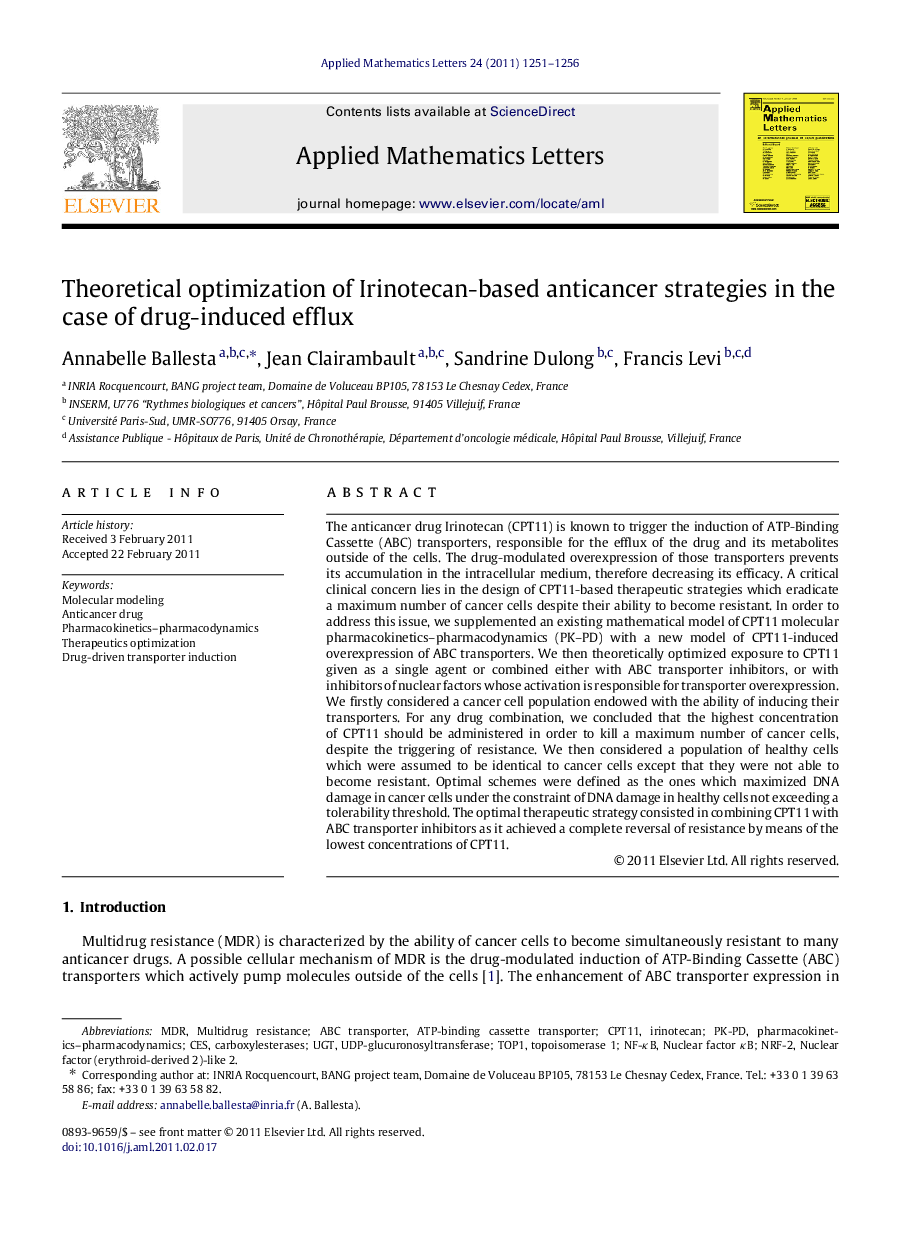| Article ID | Journal | Published Year | Pages | File Type |
|---|---|---|---|---|
| 1709232 | Applied Mathematics Letters | 2011 | 6 Pages |
The anticancer drug Irinotecan (CPT11) is known to trigger the induction of ATP-Binding Cassette (ABC) transporters, responsible for the efflux of the drug and its metabolites outside of the cells. The drug-modulated overexpression of those transporters prevents its accumulation in the intracellular medium, therefore decreasing its efficacy. A critical clinical concern lies in the design of CPT11-based therapeutic strategies which eradicate a maximum number of cancer cells despite their ability to become resistant. In order to address this issue, we supplemented an existing mathematical model of CPT11 molecular pharmacokinetics–pharmacodynamics (PK–PD) with a new model of CPT11-induced overexpression of ABC transporters. We then theoretically optimized exposure to CPT11 given as a single agent or combined either with ABC transporter inhibitors, or with inhibitors of nuclear factors whose activation is responsible for transporter overexpression. We firstly considered a cancer cell population endowed with the ability of inducing their transporters. For any drug combination, we concluded that the highest concentration of CPT11 should be administered in order to kill a maximum number of cancer cells, despite the triggering of resistance. We then considered a population of healthy cells which were assumed to be identical to cancer cells except that they were not able to become resistant. Optimal schemes were defined as the ones which maximized DNA damage in cancer cells under the constraint of DNA damage in healthy cells not exceeding a tolerability threshold. The optimal therapeutic strategy consisted in combining CPT11 with ABC transporter inhibitors as it achieved a complete reversal of resistance by means of the lowest concentrations of CPT11.
